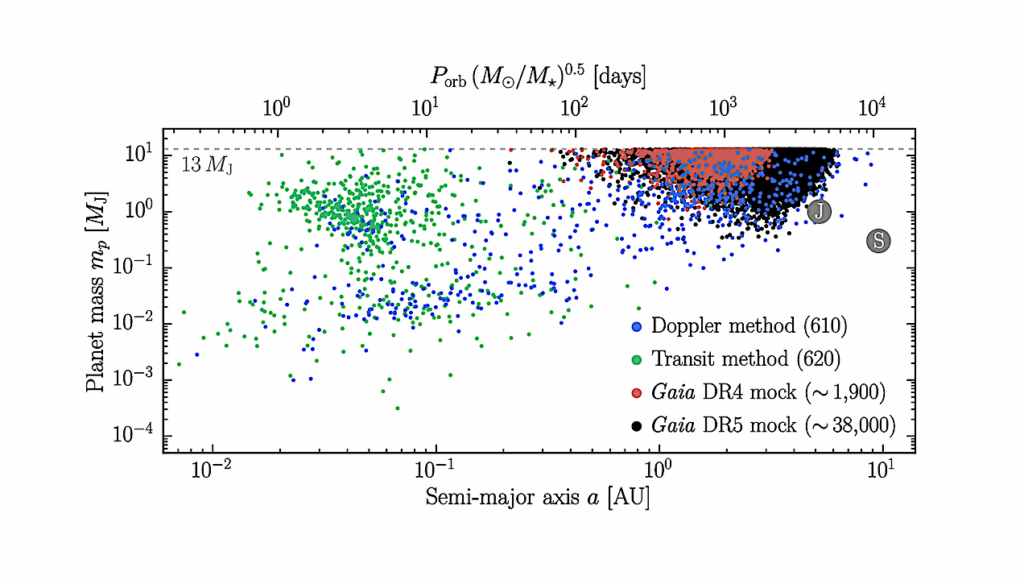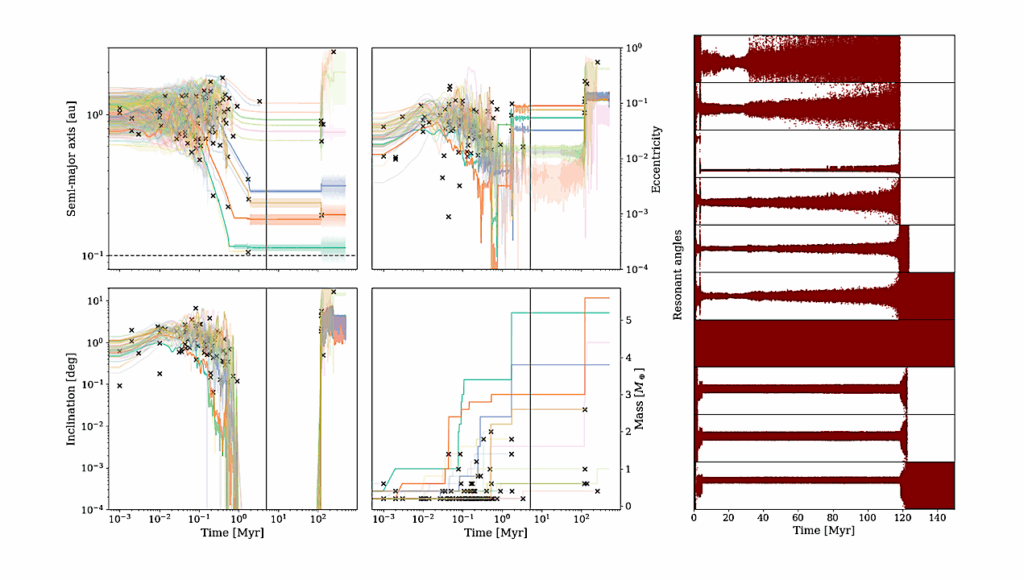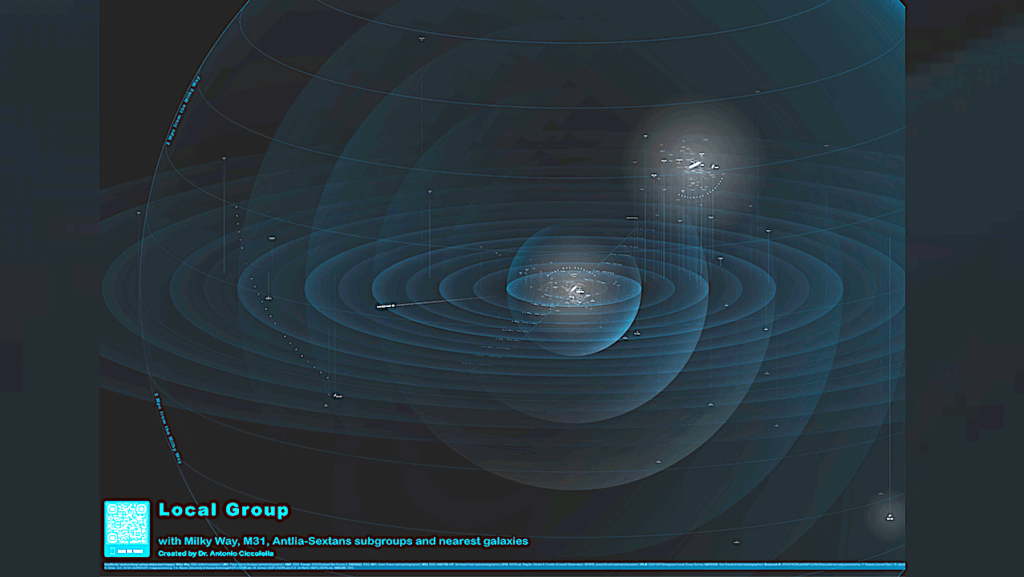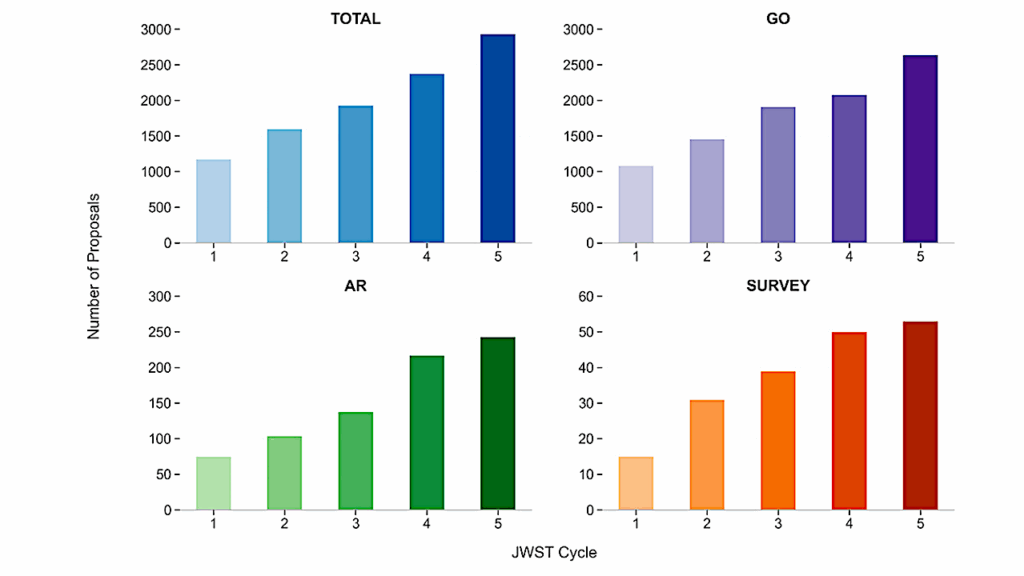No Robust Statistical Evidence for a Population of Water Worlds in a 2025 Sample of Planets Orbiting M Stars
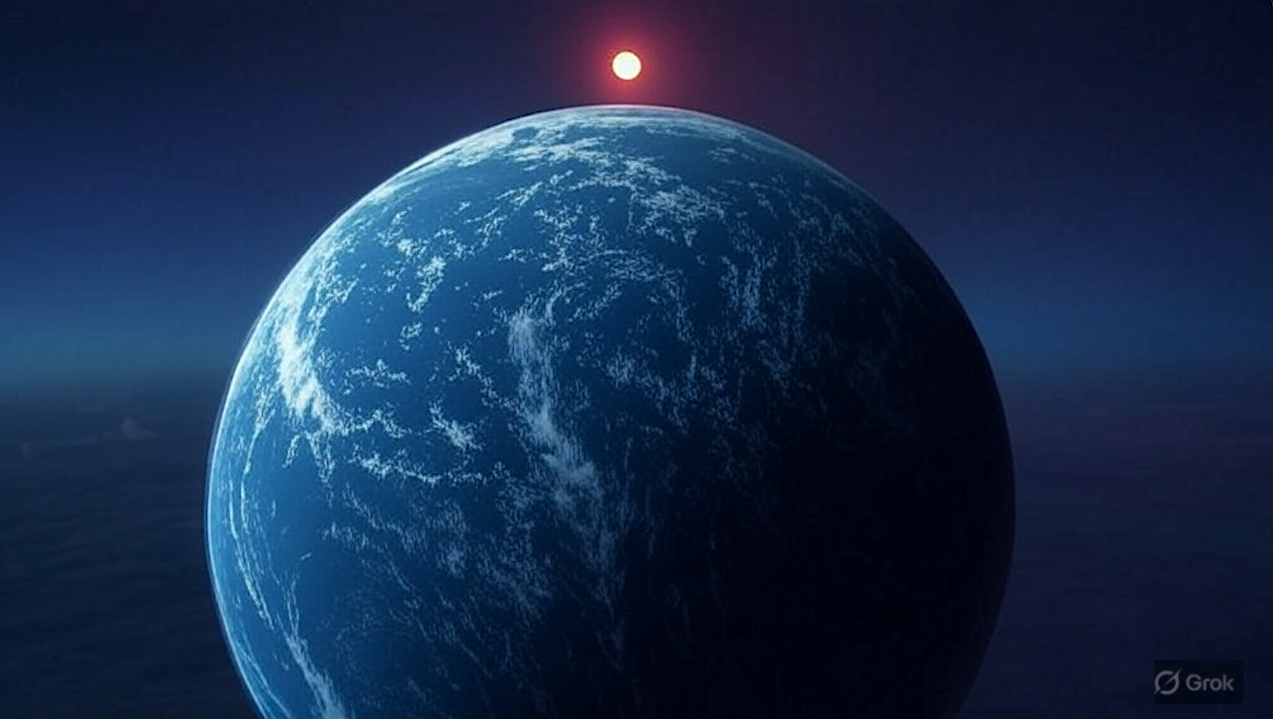
The study of exoplanets has led to many surprises, one of which is the discovery of planets larger than Earth yet smaller than Neptune, super Earths and gas dwarfs.
No such planet is a member of the Solar System, yet they appear to be abundant in the local neighbourhood. Their internal structure is not well understood. Super Earths presumably are rocky planets with a thin secondary atmosphere, whereas gas dwarfs have a substantial (by volume) primary H/He atmosphere.
However, conflicting evidence exists regarding the presence of a third class of planets, so-called water worlds, which are hypothesised to contain a significant mass fraction of water in condensed or steam form. This study examines the evidence for water worlds and presents a sample of 60 precisely measured small exoplanets (less than 4 Earth radii) orbiting M dwarf stars. We combine observational data and unsupervised machine-learning techniques to classify these planets based on their mass, radius, and density.
We individually model the interior of each planet using the ExoMDN code and classify them into populations based on these models. Our findings indicate that the sample divides into two distinct planet populations, with no clear evidence supporting the existence of water worlds in the current dataset.
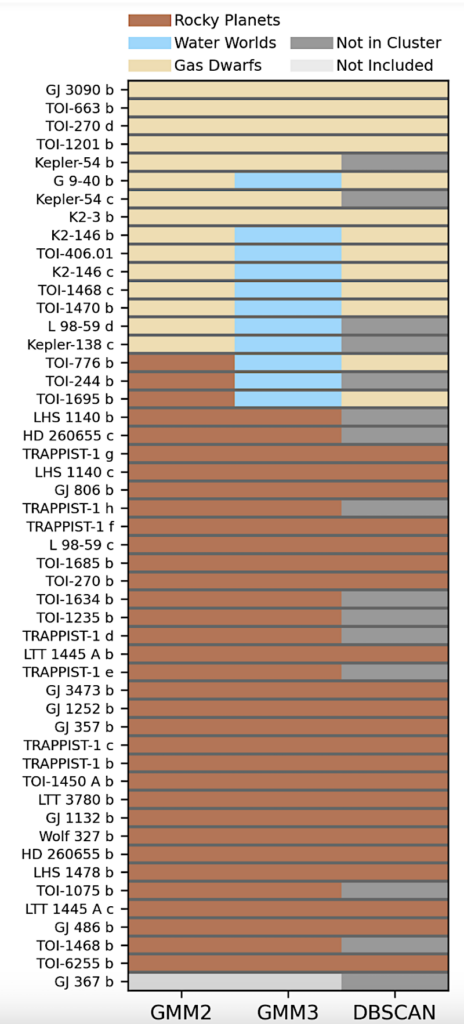
Summary of clustering results. Each row represents a planet, and each column corresponds to a different clustering method. GMM2 is categorization using Gaussian mixture modelling, assuming two populations in the 2025 sample, and GMM3 is categorization using Gaussian mixture modelling, assuming three populations in the 2025 sample. DBSCAN is the population density based clustering using the DBSCAN algorithm on the 2025 sample. — astro-ph.EP
Silke Dainese, Simon H. Albrecht
Comments: 11 pages, 8 figures, accepted for publication in A&A
Subjects: Earth and Planetary Astrophysics (astro-ph.EP); Solar and Stellar Astrophysics (astro-ph.SR)
Cite as: arXiv:2503.02451 [astro-ph.EP] (or arXiv:2503.02451v1 [astro-ph.EP] for this version)
https://doi.org/10.48550/arXiv.2503.02451
Focus to learn more
Submission history
From: Silke Dainese
[v1] Tue, 4 Mar 2025 09:56:44 UTC (4,178 KB)
https://arxiv.org/abs/2503.02451
Astrobiology


